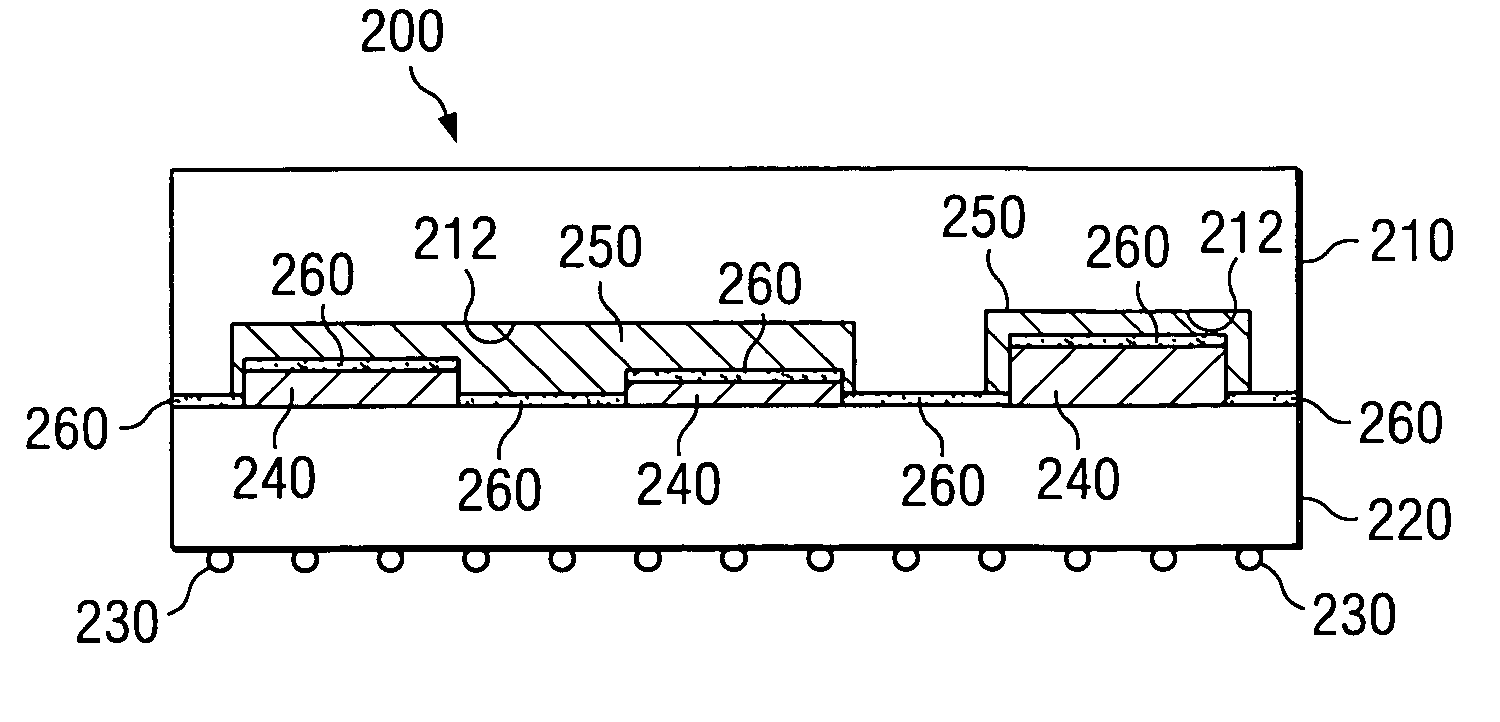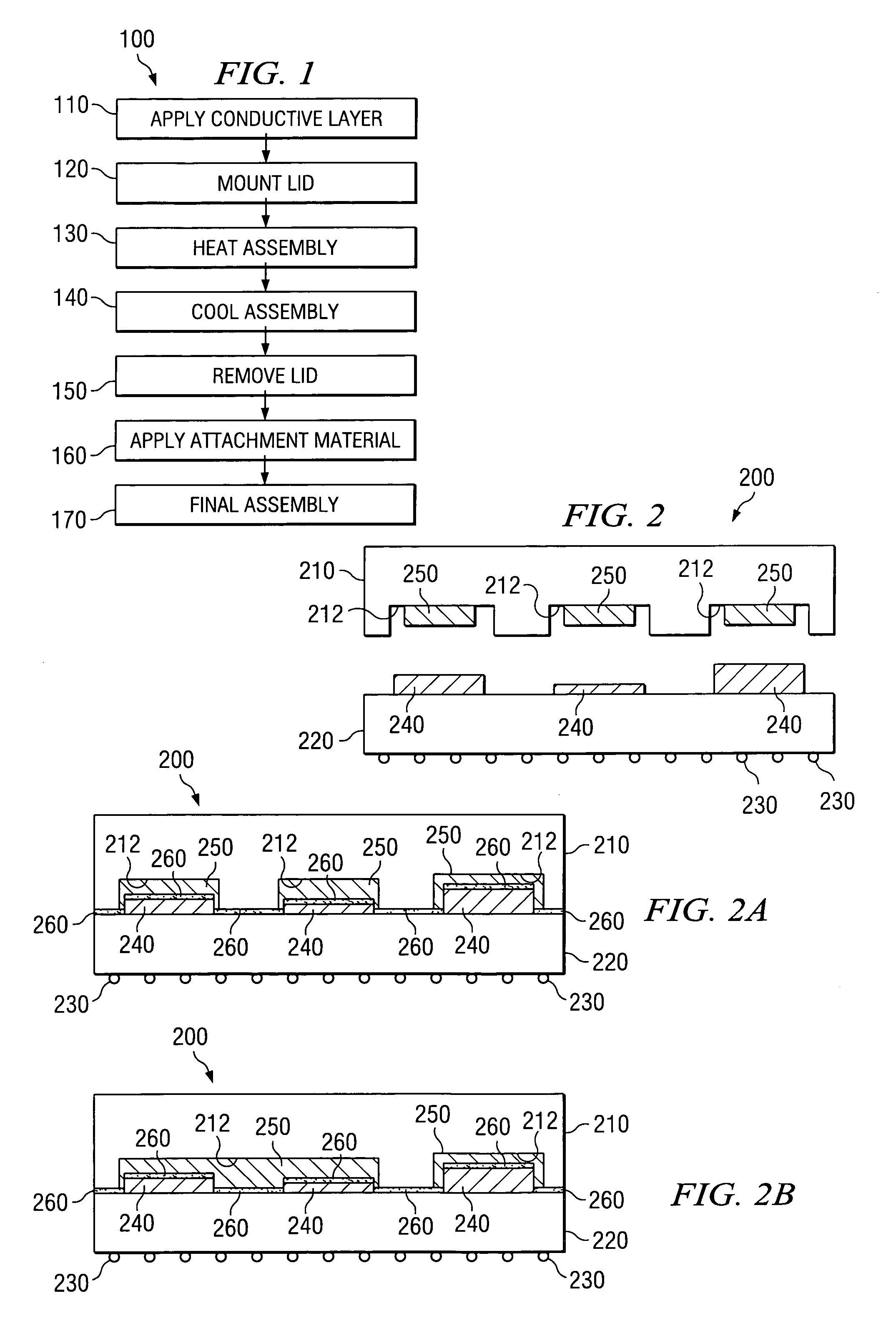System and method for high performance heat sink for multiple chip devices
a heat sink and chip technology, applied in the field of multi-chip devices, can solve the problems of low thermal conductivity, reduced heat dissipation rate of heat sink lid, uncontrolled space between devices and the cavities of heat sink lids, etc., and achieve the effect of increasing the thermal conductivity of the assembly
- Summary
- Abstract
- Description
- Claims
- Application Information
AI Technical Summary
Benefits of technology
Problems solved by technology
Method used
Image
Examples
Embodiment Construction
[0011]Multi-chip modules (MCMs) are semiconductor devices with more than one die mounted on a substrate. During operation, these semiconductor devices generate heat that must be dissipated to allow the semiconductor device to continue functioning properly. Accordingly, current methods of heat dissipation include mounting a lid having cavities with substantially uniform dimensions corresponding to each die on the substrate. This lid or heat sink is generally mounted to the substrate so that the individual dies of the semiconductor device fit inside the cavities of the lid. Often, the individual dies on the substrate of an MCM or ASIC have varying heights and dimensions, thus resulting in gaps of varying sizes between the dies and the surface of the lid cavities. In order to dissipate heat from the dies to the heat sink link, epoxies are often used to fill the gaps between the dies and the cavity. Unfortunately, most epoxies have very poor thermally conductive properties. For example,...
PUM
 Login to View More
Login to View More Abstract
Description
Claims
Application Information
 Login to View More
Login to View More - R&D
- Intellectual Property
- Life Sciences
- Materials
- Tech Scout
- Unparalleled Data Quality
- Higher Quality Content
- 60% Fewer Hallucinations
Browse by: Latest US Patents, China's latest patents, Technical Efficacy Thesaurus, Application Domain, Technology Topic, Popular Technical Reports.
© 2025 PatSnap. All rights reserved.Legal|Privacy policy|Modern Slavery Act Transparency Statement|Sitemap|About US| Contact US: help@patsnap.com


